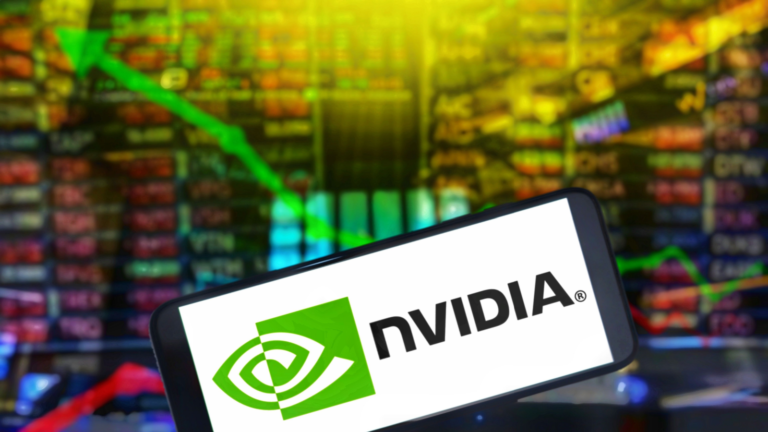It was always a matter of time before Nvidia (NASDAQ:NVDA) stock broke through the trillion-dollar threshold. It was simply when, not if. The rise of AI finally propelled the chip stock across the threshold earlier this summer. Today Nvidia is valued at $1.15 trillion and the question naturally arises, can it become a $2 trillion stock?
Yes, would seem the obvious answer, but when? Nvidia stock is not cheap. It trades at 61 times earnings, 25 times sales, and 65 times free cash flow. Those are lofty valuations even for a business hitting on all cylinders like Nvidia. So let’s look more closely at whether the chipmaker falls back below $1 trillion before it hits $2 trillion.
Paying up for Quality
Only four other companies have such richly valuations: Apple, Microsoft, Alphabet, and Amazon are all worth north of $1 trillion. All five stocks also have the distinction of being included in the so-called Magnificent 7 group of stocks that counted for almost all the S&P 500’s gains for most of the year. Meta Platforms and Tesla are the other two.
Of those seven companies, however, none has performed better than NVDA stock. Its shares are up 220% year-to-date. Because the chip stock represents about 3% of the broad index’s total valuation, Nvidia had an outsized influence on its performance.
As noted before, AI was the driving force behind the gains. OpenAI’s release of ChatGPT almost exactly one year ago ignited a torrent of interest in the technology. Other generative AI models soon followed and now the genie is out of the bottle. Nvidia remains perfectly positioned to capture much of the demand.
Its AI chip architecture offers the sort of computing power needed for the complex computations AI demands. And customer demand for its chips remains strong. Data center revenue quadrupled from last year and networking revenue nearly tripled. Cloud service providers, for example, account for half of all the demand Nvidia’s data center segment saw in the third quarter.
CFO Collete Kress told analysts, “Some of the most exciting generative AI applications are built and run on Nvidia, including Adobe, Firefly, ChatGPT, (and) Microsoft 365 Copilot.”
NVDA Stock Weakness?
The gains speak to a long road of expansion for Nvidia, but it’s not all open highway. New government restrictions on the computer chips companies can sell to China will affect NVDA stock.
China represents 22%, or $4 billion of the chipmaker’s total $18 billion revenue stream. They accounted for one-fifth to one-quarter of Nvidia’s data center revenue. Kress said she did not have good visibility into the magnitude the export controls will have on its business.
CEO Jensen Huang remains convinced Nvidia will keep growing. It has new customers coming online all the time, including new sovereign AI clouds. Revenue could expand not only next year, but in 2025 as well.
There is also a lot of uncertainty as to the ultimate impact AI will have on customer bottom lines. While it’s the hot new thing, if cost savings or productivity improvements don’t materialize on the scale expected, that could lead to a slowdown in demand. And at some point, demand will slow naturally. That could also deflate Nvidia’s prospects.
Nvidia looks primed to benefit. However, it is also priced for perfection. The first speed bump it hit was China export controls for new technology. They caused NVDA stock to fall back to the $400 per share level.
To hit $2 trillion, NVDA stock will need to almost double from here. Some time in the future it appears likely to achieve that. But there are enough potential hiccups ahead that an investor should proceed with caution. A pullback to below $400 a share would be a better value proposition to buy in.
On the date of publication, Rich Duprey did not hold (either directly or indirectly) any positions in the securities mentioned in this article. The opinions expressed in this article are those of the writer, subject to the InvestorPlace.com Publishing Guidelines.

